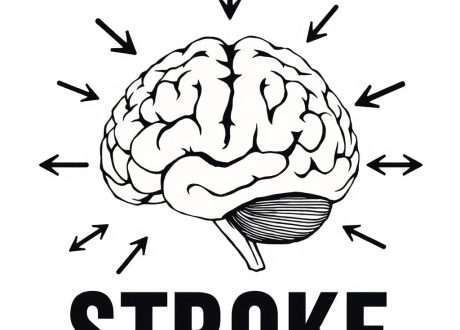 A.F. Turgeon, D.A. Fergusson, L. Clayton, M.-P. Patton, X. Neveu, T.S. Walsh, A. Docherty, L.M. Malbouisson, S. Pili-Floury, S.W. English, R. Zarychanski, L. Moore, P.L. Bonaventure, V. Laroche, M. Verret, D.C. Scales, N.K.J. Adhikari, J. Greenbaum, A. Kramer, V.G. Rey, I. Ball, K. Khwaja, M. Wise, D. Harvey, F. Lamontagne, R. Chabanne, A. Algird, S. Krueper, J. Pottecher, F. Zeiler, J. Rhodes, A. Rigamonti, K.E.A. Burns, J. Marshall, D.E. Griesdale, L.S. Sisconetto, D.J. Kutsogiannis, C. Roger, R. Green, J.G. Boyd, J. Wright, E. Charbonney, P. Nair, T. Astles, E. Sy, P.C. H├Еbert, M. Chass├Е, A. Gomez, T. Ramsay, M. Taljaard, A. Fox-Robichaud, A. Tinmouth, M. St-Onge, O. Costerousse, and F. Lauzier, for the HEMOTION Trial Investigators on behalf of the Canadian Critical Care Trials Group, the Canadian Perioperative Anesthesia Clinical Trials Group, and the Canadian Traumatic Brain Injury Research Consortium*
A.F. Turgeon, D.A. Fergusson, L. Clayton, M.-P. Patton, X. Neveu, T.S. Walsh, A. Docherty, L.M. Malbouisson, S. Pili-Floury, S.W. English, R. Zarychanski, L. Moore, P.L. Bonaventure, V. Laroche, M. Verret, D.C. Scales, N.K.J. Adhikari, J. Greenbaum, A. Kramer, V.G. Rey, I. Ball, K. Khwaja, M. Wise, D. Harvey, F. Lamontagne, R. Chabanne, A. Algird, S. Krueper, J. Pottecher, F. Zeiler, J. Rhodes, A. Rigamonti, K.E.A. Burns, J. Marshall, D.E. Griesdale, L.S. Sisconetto, D.J. Kutsogiannis, C. Roger, R. Green, J.G. Boyd, J. Wright, E. Charbonney, P. Nair, T. Astles, E. Sy, P.C. H├Еbert, M. Chass├Е, A. Gomez, T. Ramsay, M. Taljaard, A. Fox-Robichaud, A. Tinmouth, M. St-Onge, O. Costerousse, and F. Lauzier, for the HEMOTION Trial Investigators on behalf of the Canadian Critical Care Trials Group, the Canadian Perioperative Anesthesia Clinical Trials Group, and the Canadian Traumatic Brain Injury Research Consortium*
Abstract 
Background:┬аThe effect of a liberal transfusion strategy as compared with a restrictive strategy on outcomes in critically ill patients with traumatic brain injury is unclear.
Methods:┬аWe randomly assigned adults with moderate or severe traumatic brain injury and anemia to receive transfusion of red cells according to a liberal strategy (transfusions initiated at a hemoglobin level of РЅц10 g per deciliter) or a restrictive strategy (transfusions initiated at РЅц7 g per deciliter). The primary outcome was an unfavorable outcome as assessed by the score on the Glasgow Outcome Scale-Extended at 6 months, which we categorized with the use of a sliding dichotomy that was based on the prognosis of each patient at baseline. Secondary outcomes included mortality, functional independence, quality of life, and depression at 6 months.
Results:┬аA total of 742 patients underwent randomization, with 371 assigned to each group. The analysis of the primary outcome included 722 patients. The median hemoglobin level in the intensive care unit was 10.8 g per deciliter in the group assigned to the liberal strategy and 8.8 g per deciliter in the group assigned to the restrictive strategy. An unfavorable outcome occurred in 249 of 364 patients (68.4%) in the liberal-strategy group and in 263 of 358 (73.5%) in the restrictive-strategy group (adjusted absolute difference, restrictive strategy vs. liberal strategy, 5.4 percentage points; 95% confidence interval, -2.9 to 13.7). Among survivors, a liberal strategy was associated with higher scores on some but not all the scales assessing functional independence and quality of life. No association was observed between the transfusion strategy and mortality or depression. Venous thromboembolic events occurred in 8.4% of the patients in each group, and acute respiratory distress syndrome occurred in 3.3% and 0.8% of patients in the liberal-strategy and restrictive-strategy groups, respectively.
Conclusions:┬аIn critically ill patients with traumatic brain injury and anemia, a liberal transfusion strategy did not reduce the risk of an unfavorable neurologic outcome at 6 months. (Funded by the Canadian Institutes of Health Research and others; HEMOTION ClinicalTrials.gov number,










